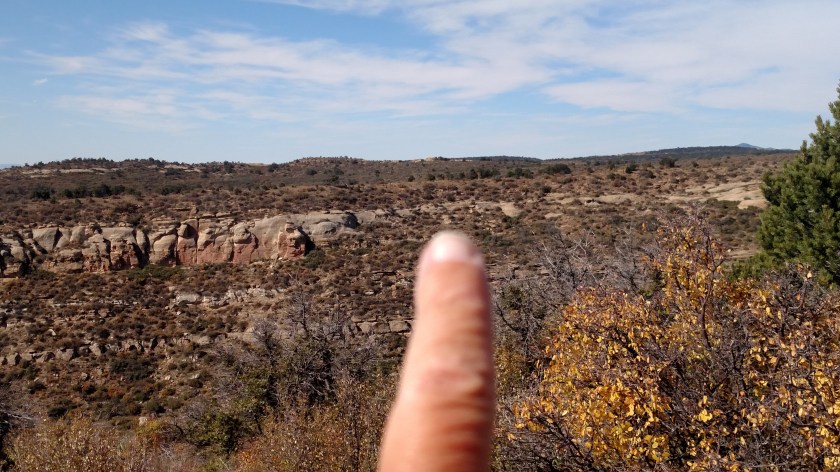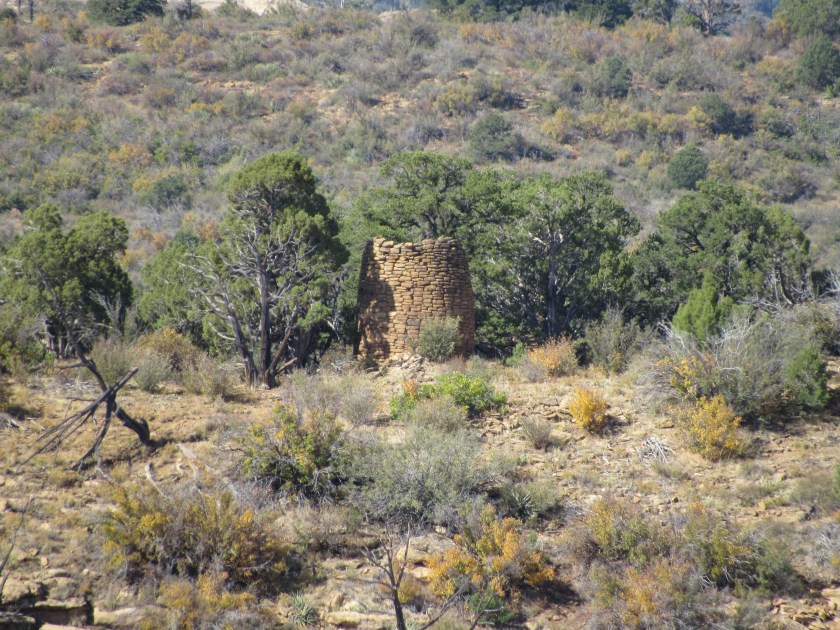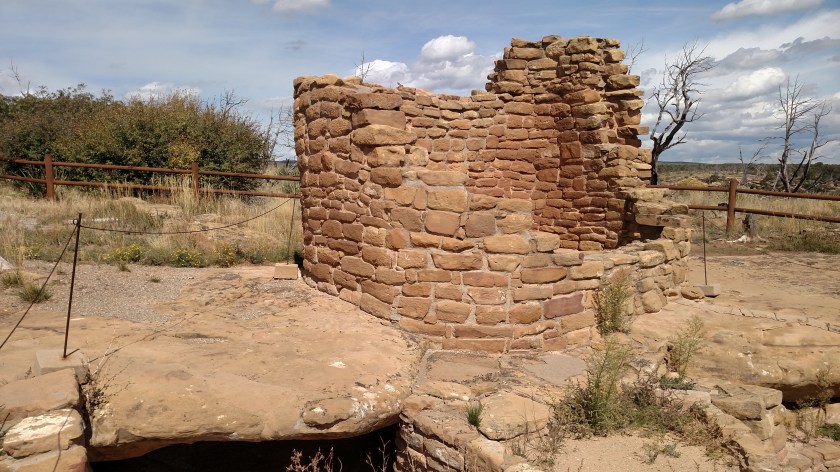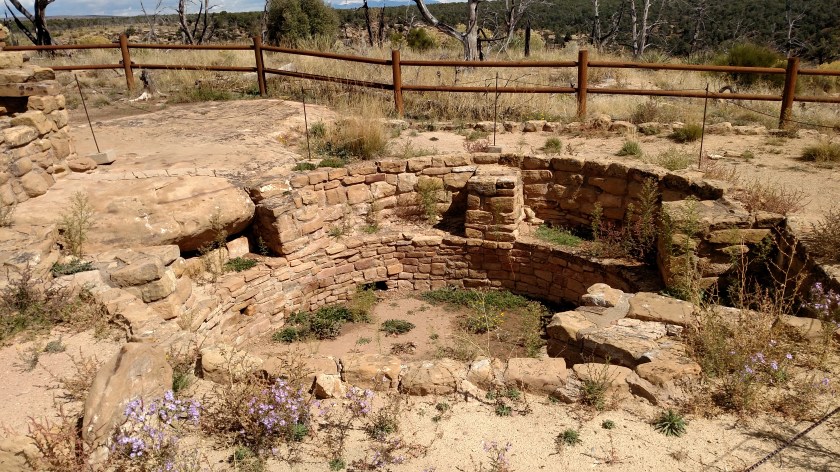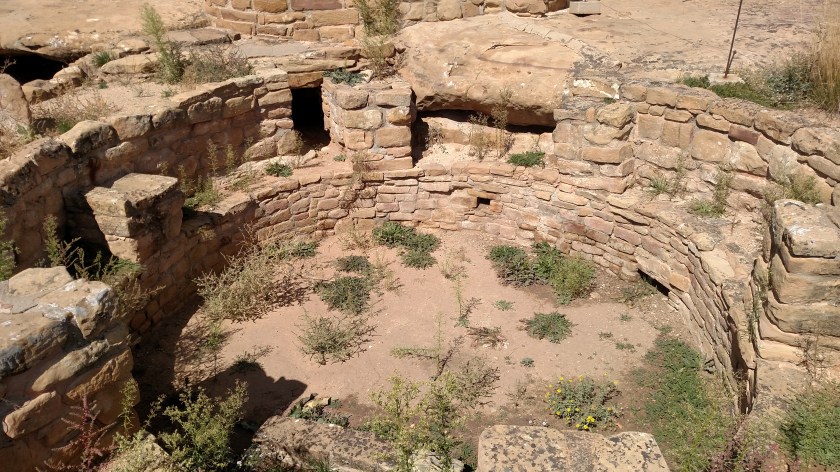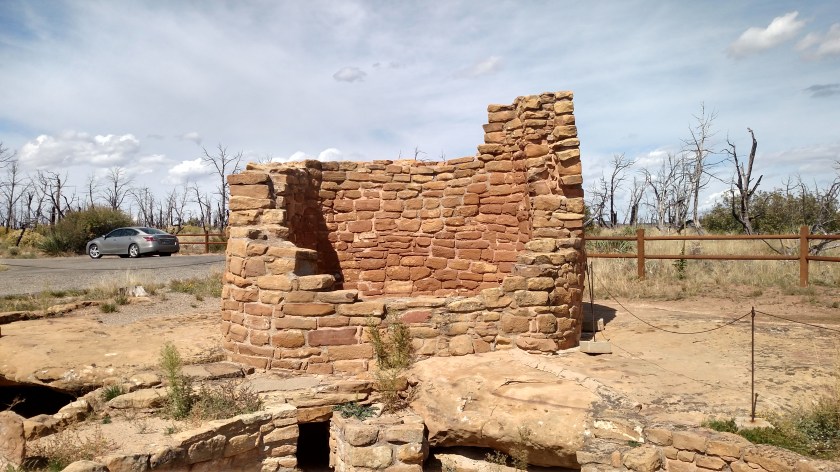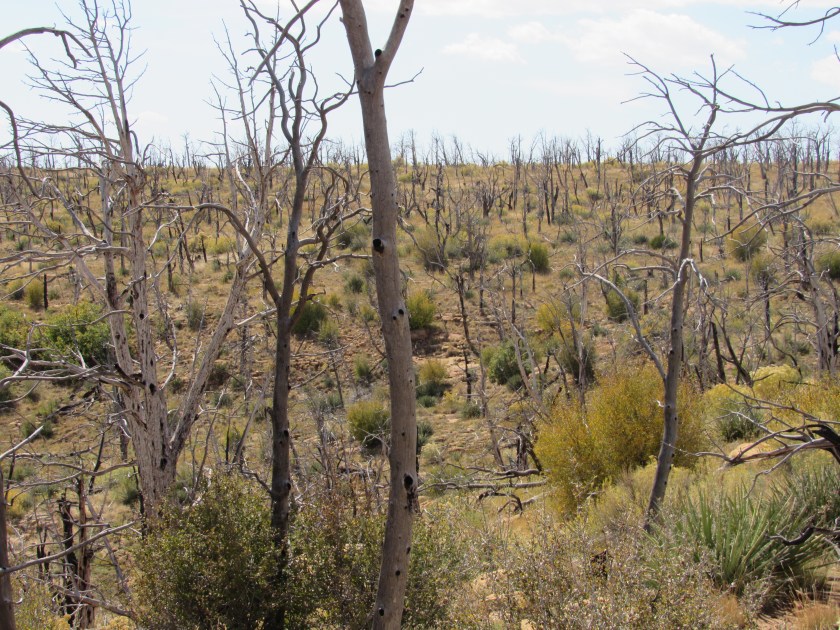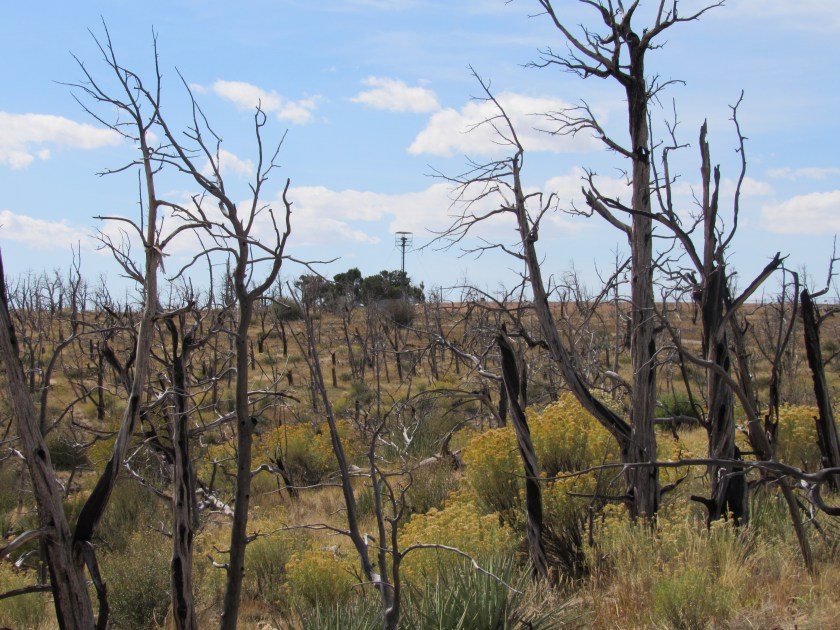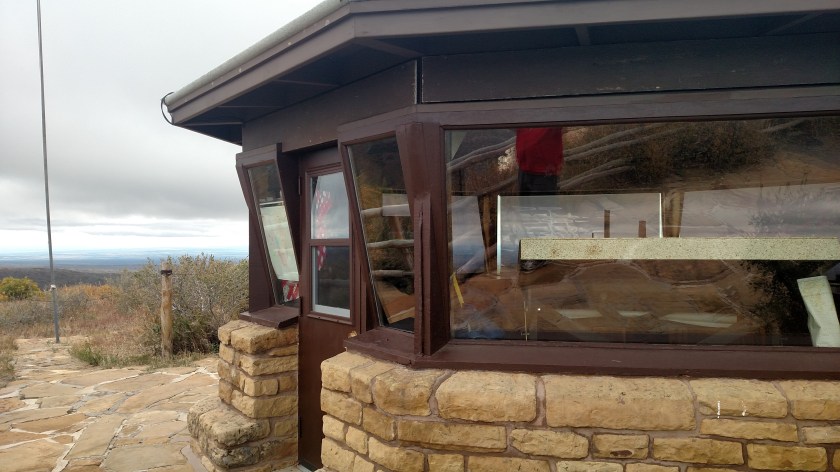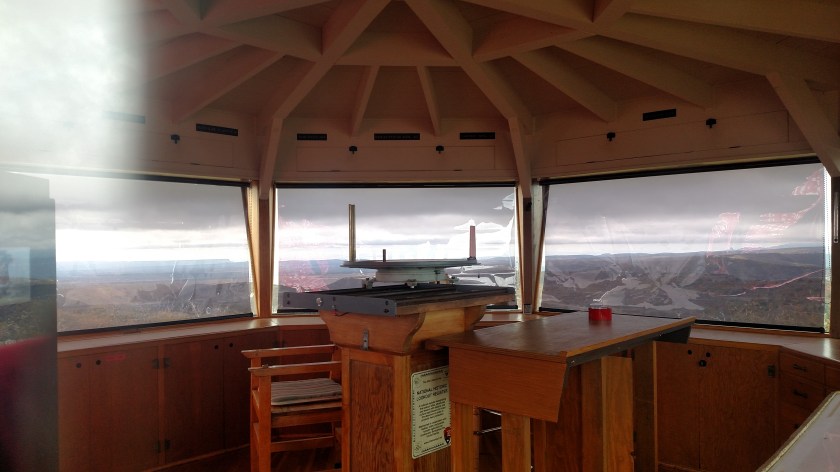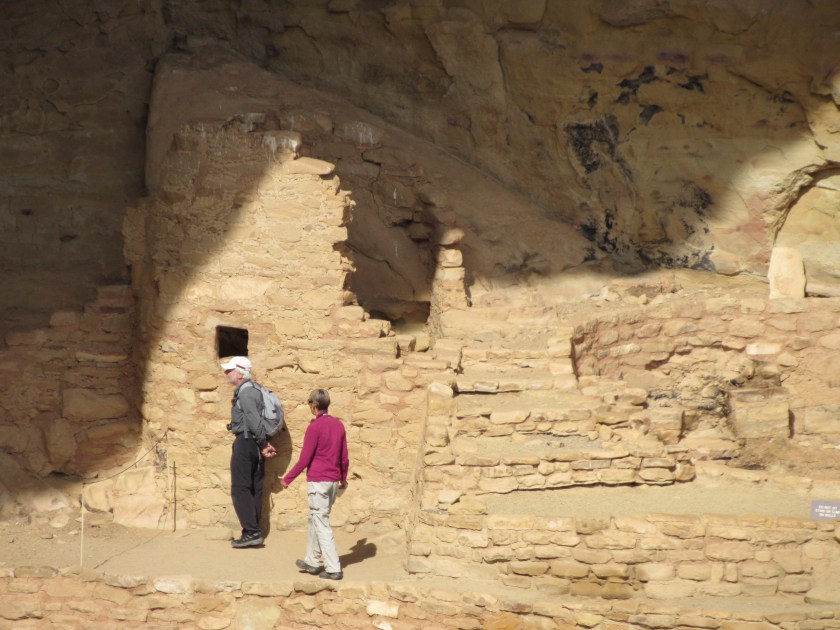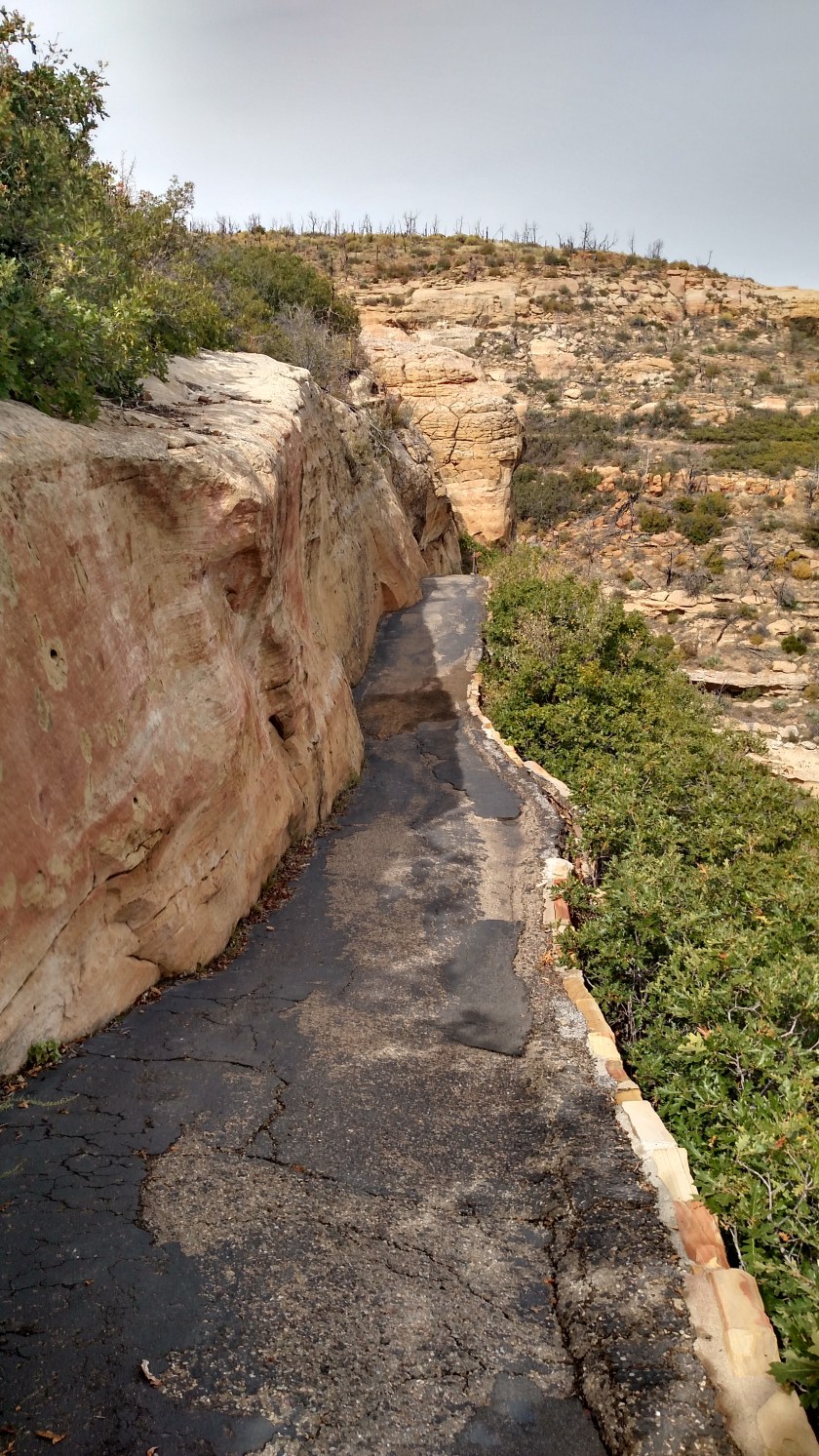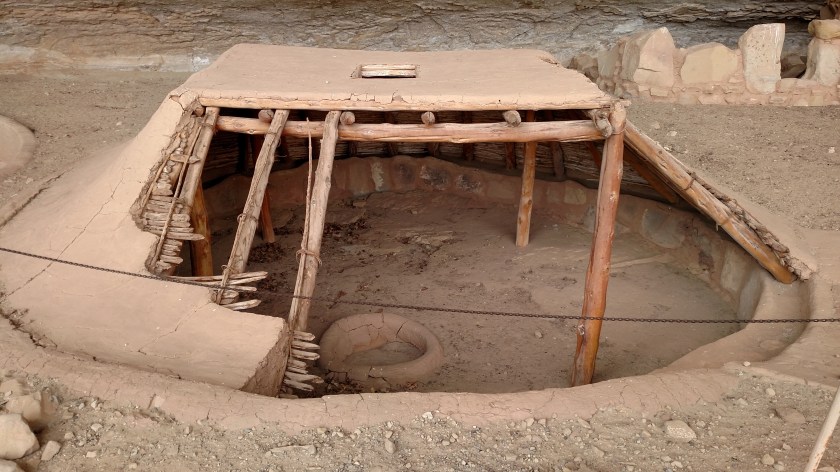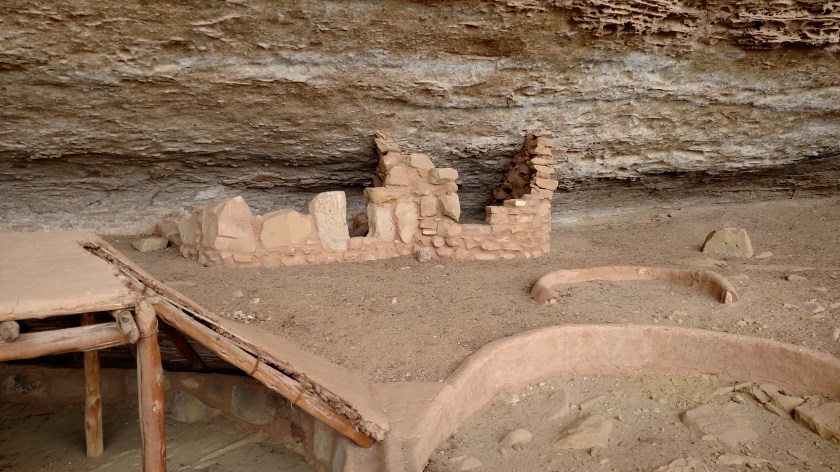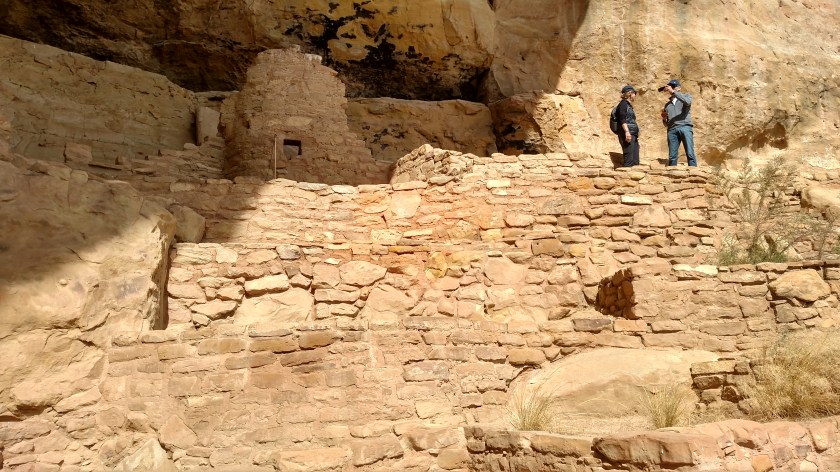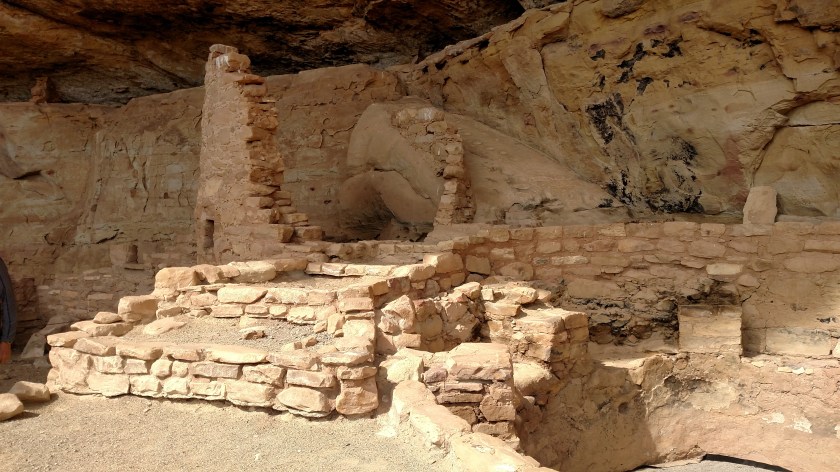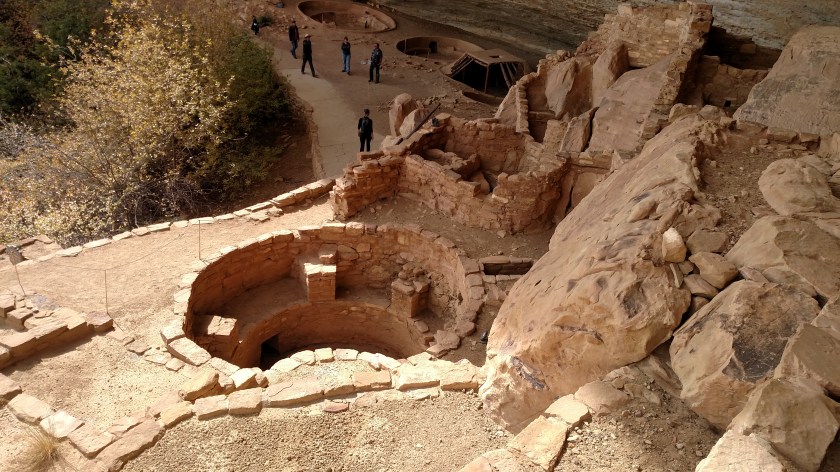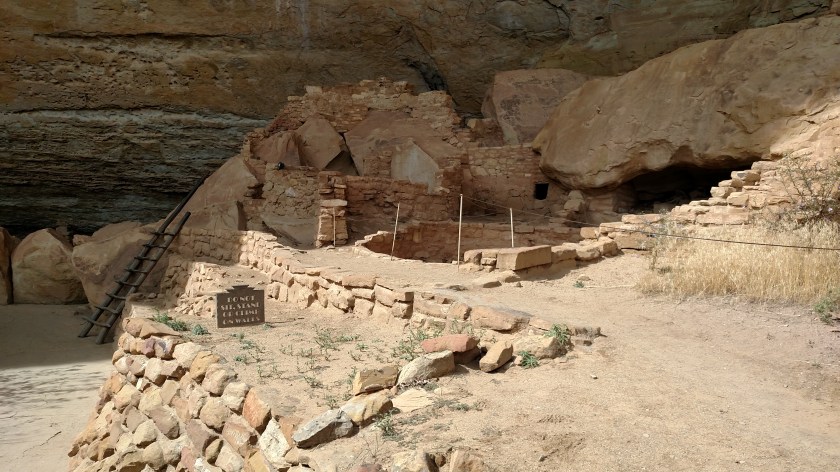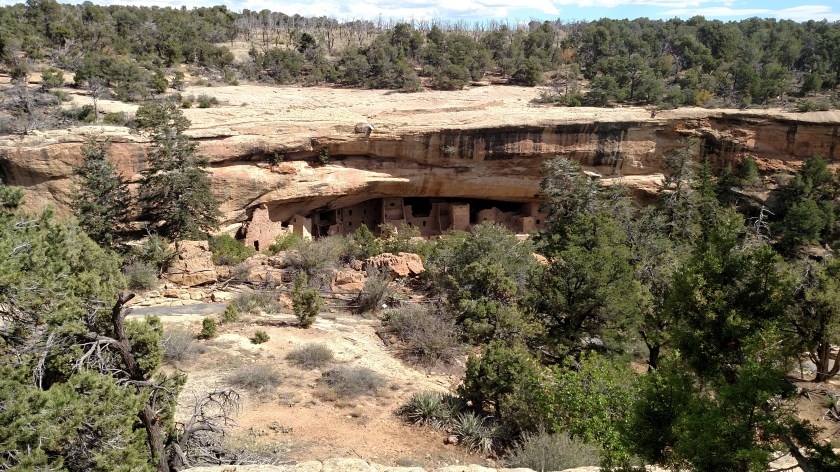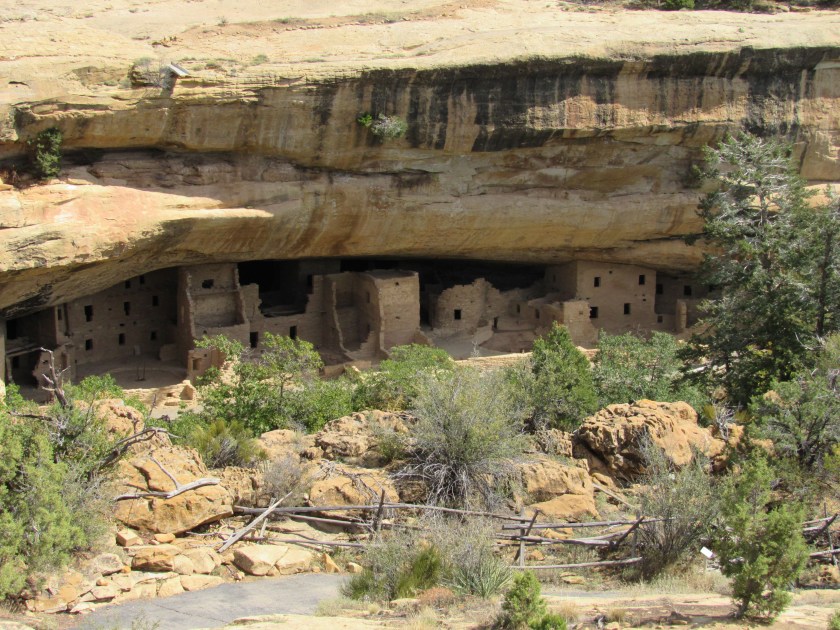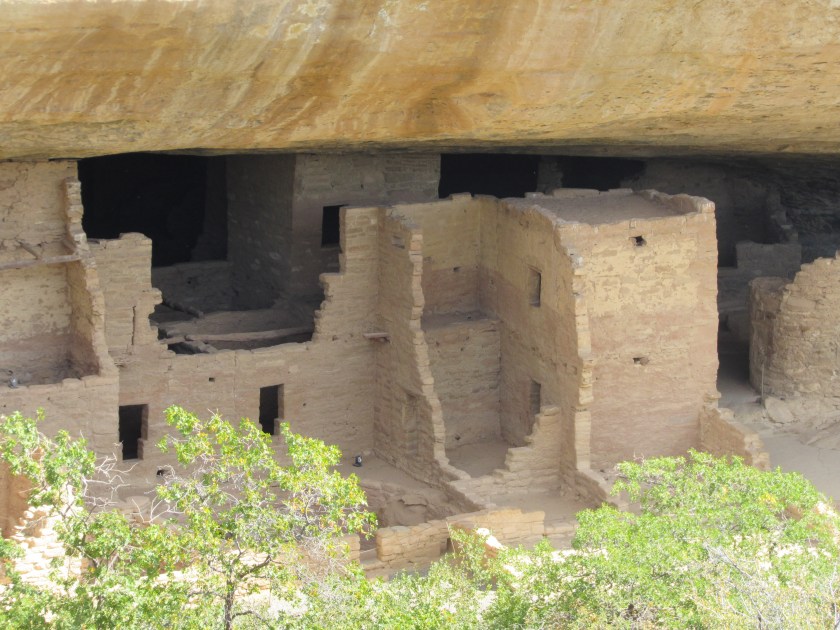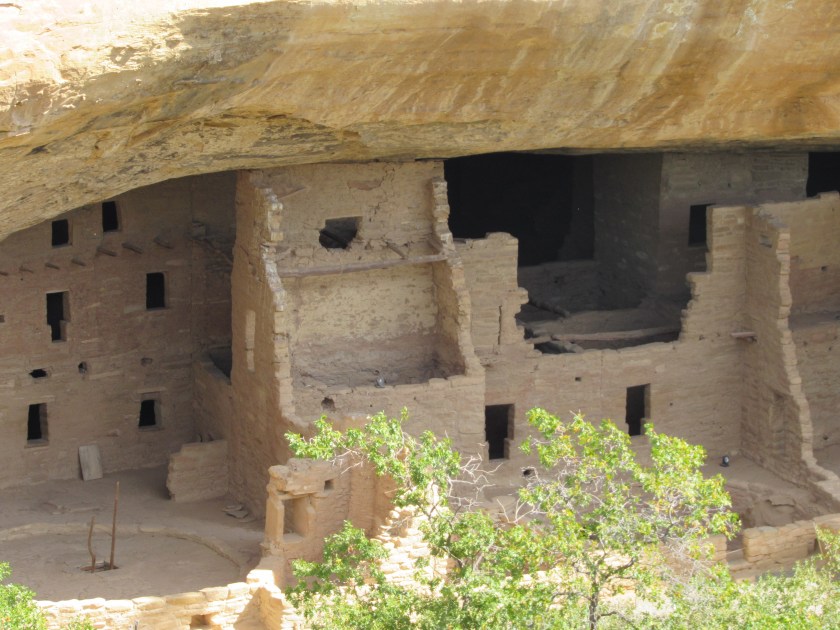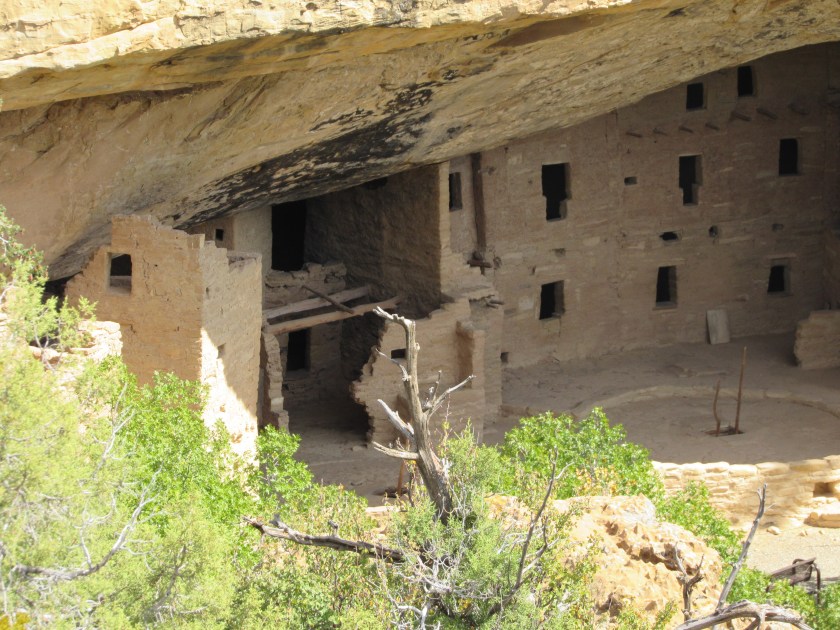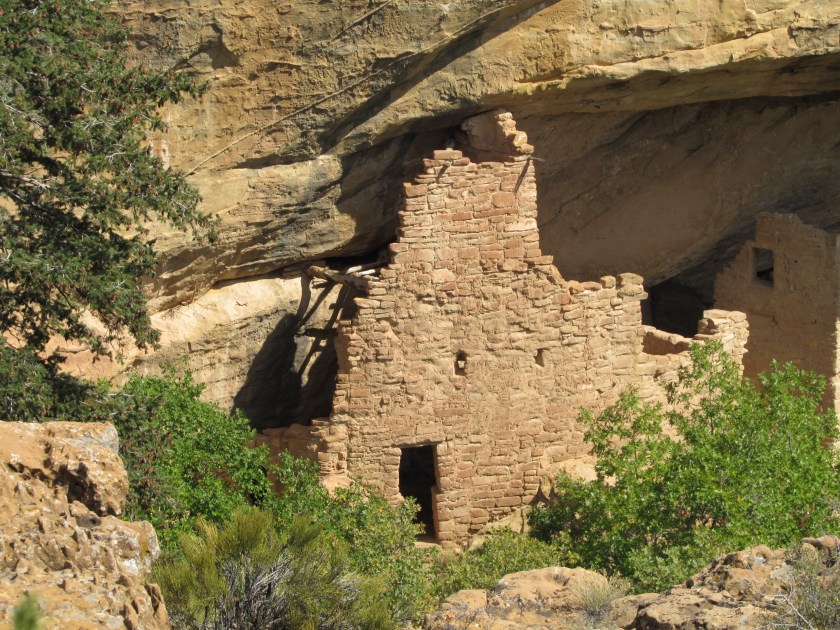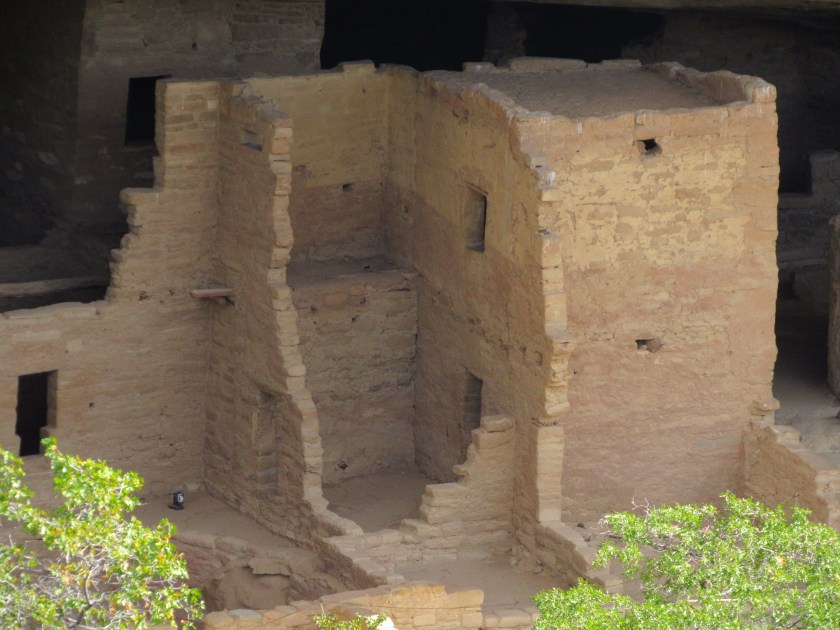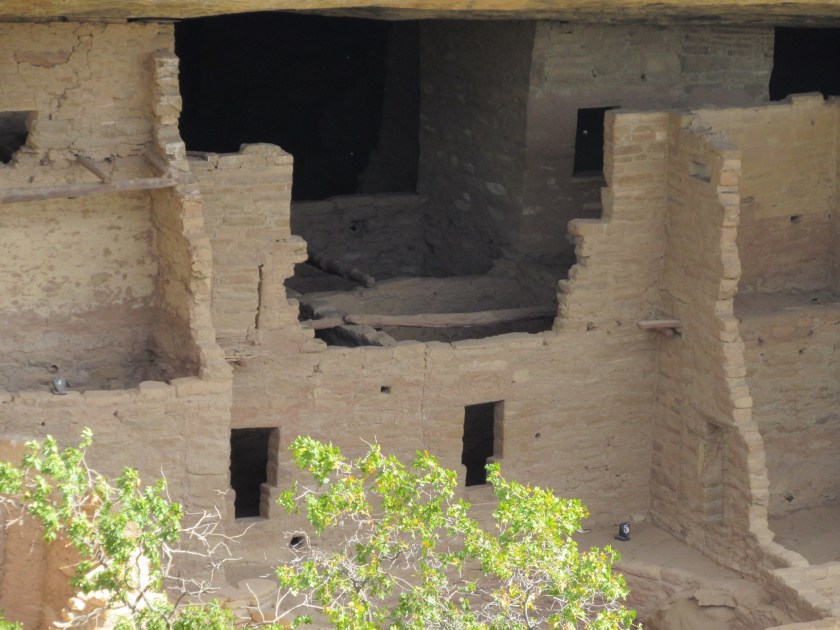Sunday I spent the whole day at Mesa Verde. The rain from Saturday moved away and the day started out completely clear, although some scattered clouds developed during the afternoon. It was still quite windy, although most of the Park is above 7,000 feet so that may always be the case.
One of the first things I noticed as I drove through the Park were the fall colors. Because of all the forest fires there aren’t that many tall trees, but there are a lot of shrubs and bushes on the hillsides and in the fields and they put on quite a show. Not the brilliant colors that one might see in New England or other places, but impressive nonetheless. These are more subdued shades of golden yellow, burnt orange, red, and reddish brown.
There are other things I saw throughout the Park which I will include in future posts but for now I’ll focus on colors:
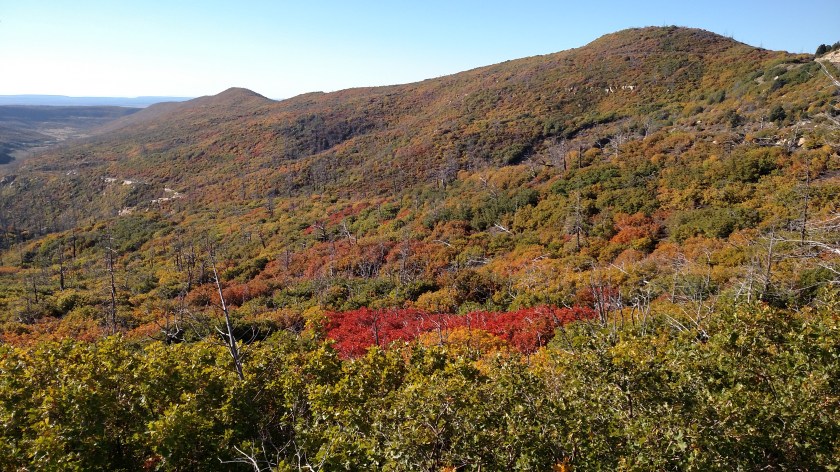

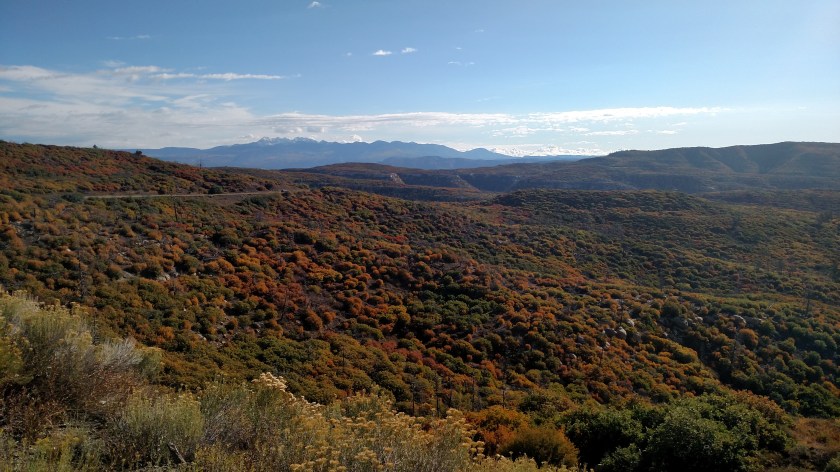


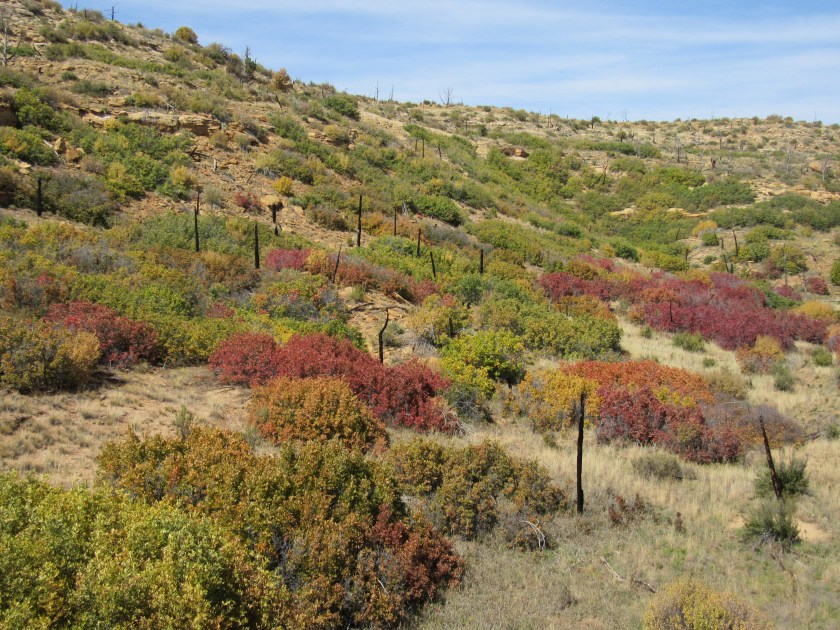
And there was one more colorful thing I saw today. As I was beginning my descent to the Step House cliff dwelling I saw a black wasp with red wings! It was quite a sight and I was very surprised. It landed on a plant near me briefly but I couldn’t get the camera out quickly enough to get a picture. I saw it a second time but it was in flight.
It was quite large and the body was jet black. The wings were red or orange and it was quite an attention-getter when in flight both because of the size and the color combination. When I got home I found this photo online:

(Photo credit: bugguide.net)
It is called a Tarantula Hawk wasp and is a predator of, you guessed it, tarantulas. It is a good thing it didn’t sting me because apparently the sting is quite painful to humans. They normally don’t bother humans unless provoked and although I would have liked to have gotten a nice picture of it I certainly wasn’t planning to harass it. It was really quite beautiful. I have never seen one before but I hope I do again.
